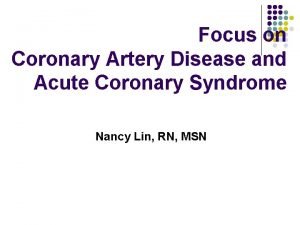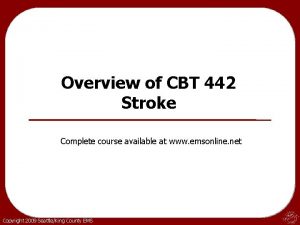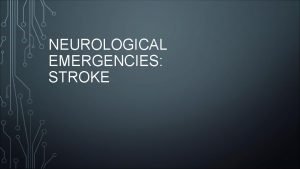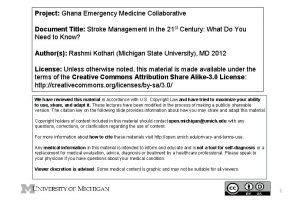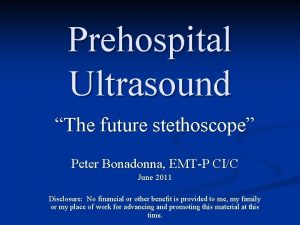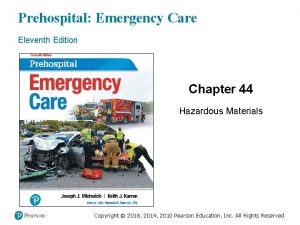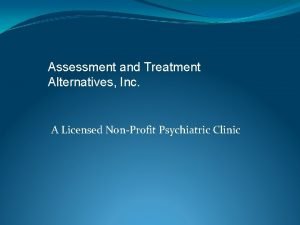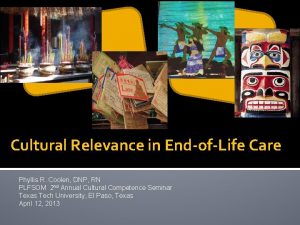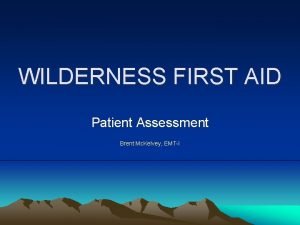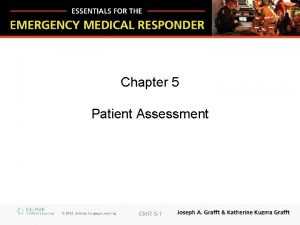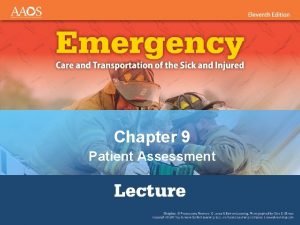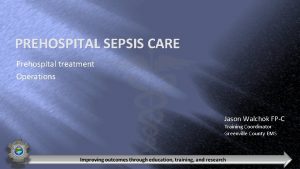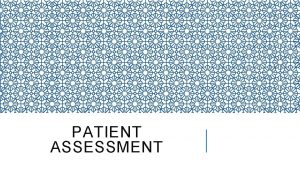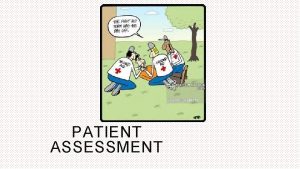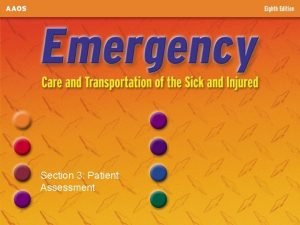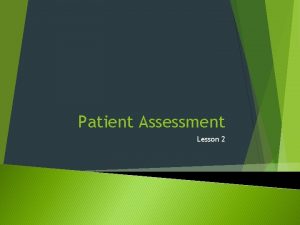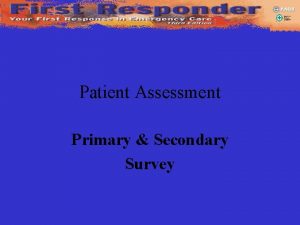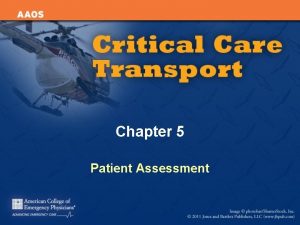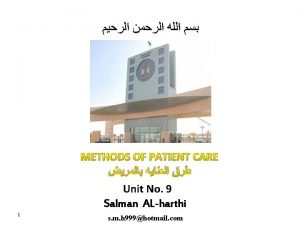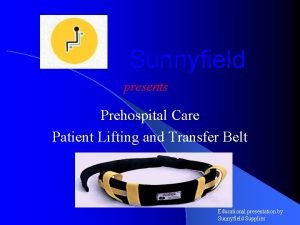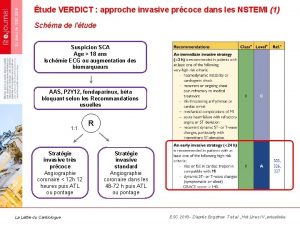Prehospital NSTEMI Patient Assessment and Treatment Paul A

















- Slides: 17

Prehospital NSTEMI Patient Assessment and Treatment Paul A. Berlin, MS, NRP

Presenter Disclosure Information Paul A. Berlin Prehospital Non-STEMI Assessment and Treatment FINANCIAL DISCLOSURE: § None UNLABELED/UNAPPROVED USES DISCLOSURE: § None

ECG: High Risk ACS? 82 YOM, Hx HTN, complain of chest pressure 3

68 YOF, Weakness, 132/88, 83, 24

Acute Coronary Syndrome Presentation Working Dx ECG Cardiac Biomarker Final Dx No ST Elevation Non-ST ACS UA NSTEMI ST Elevation Unstable Myocardial Infarction Angina NQMI Qw MI Libby P. Circulation 2001; 104: 365, Hamm CW, Bertrand M, Braunwald E, Lancet 2001; 358: 1533 -1538; Davies MJ. Heart 2000; 83: 361 -366. Anderson JL, et al. J Am Coll Cardiol. 2007; 50: e 1 -e 157,

Myocardial Infarction • Non-ST – Segment Elevation (NSTEMI) (30% - 45%) • ST – Segment Elevation (STEMI) (55% - 70%) How do we find the 30% - 45% of MI patients we are missing?

Cumulative mortality (%) Prognosis of NSTEMI vs STEMI 10 8 6 4 2 0 GUSTO IIb 0 30 60 90 120 Days from randomization ST ACS STEMI with fibrinolytics T-wave inversion 150 180 Short-term (in-hospital or one month) mortality: NSTEMI (3 -5%) compared to STEMI (10 -15%). Re-infarction rate after hospital discharge NSTEMI (15 -25%) to STEMI (5 -8%). Long-term mortality is similar or higher in NSTEMI compared to STEMI (two year mortality is approximately 30% in both cases

NSTEMI ECG Features Can Be: • ST depression (70 -80%) • T wave inversion(10 -20%) – Symmetrical • Both ST depression and T wave inversion • Normal ECG

Assess Applicability for ACS Triage WA State EMS ≥ 21 years of age with symptoms lasting more than 10 minutes but less than 12 hours suspected to be caused by coronary artery disease: q Chest discomfort, pressure, crushing pain, tightness, heaviness, cramping, burning, aching sensation, usually in the center of the chest lasting more than a few minutes, or that goes away and comes back. q Epigastric (stomach) discomfort, such as unexplained indigestion, belching, or pain. q Shortness of breath with or without chest discomfort. q Radiating pain or discomfort in 1 or both arms, neck, jaws, shoulders, or back. q Other symptoms may include sweating, nausea, vomiting. q Women, diabetics, and geriatric patients might not have chest discomfort or pain. Instead they might have nausea/vomiting, back or jaw pain, fatigue/weakness, or generalized complaints.

Assess High Risk Criteria Based on TIMI (Three or more checked, High risk for NSTEMI) q Age ≥ 55* q 3 or more CAD risk factors: q q q Family history of CAD High BP High cholesterol Diabetes Current smoker q Aspirin use in last 7 days q Angina in last 24 hours q ST-segment deviation on ECG q Known coronary disease q Elevated cardiac biomarkers

Reporting Times (mins) Reporting Times for Cardiac Markers for the ED 180 160 140 120 100 80 60 40 20 0 Bedside Test (mean=15 mins) Laboratory Test (mean=128 mins) Test Type Point-of-care testing reduces ED length of stay (Annals of EM, June 2005) POC

High-sensitivity cardiac troponin I at presentation in patients with suspected ACS • Low plasma troponin concentrations identify two –thirds of patients at very low risk of cardiac events who could be discharged from hospital. • Implementation of this approach could substantially reduce hospital admissions and have major benefits for both patients and health –care providers. The Lancet, 10/27/2015 Shah ASV, et al.

NSTEMI MORTALITY RATES: EARLY vs LATER CATH Bhatt, D. L. et al. JAMA 2004; 292: 2096 -2104.

Treatment Options • • Limit scene time Transport patient to the right facility Follow AHA or local protocols Communicate with receiving facility – Transmit ECG if available • Fibrinolytic check sheet PRN

Challenges • ECG quality • Acceptance of POC – Establishing POC • Risk Assessment Training • Acceptance by Receiving Centers

Questions? • NSTEMI recognition programs are the next step in ACS care following the implementation of strong Prehospital STEMI care programs. • Early recognition of NSTEMI using ECG findings, risk stratification and early biomarkers by prehospital care providers can direct patients to appropriate receiving facilities and reduce morbidity and mortality.

Contact Info: Paul A. Berlin Irondoc. paul@gmail. com
 Chapter 16
Chapter 16 Prehospital emergency care 10th edition
Prehospital emergency care 10th edition Pre-hospital communication
Pre-hospital communication Cincinnati prehospital stroke scale
Cincinnati prehospital stroke scale Lams stroke scale
Lams stroke scale Prehospital emergency care 11th edition
Prehospital emergency care 11th edition Prehospital emergency care 11th edition study guide
Prehospital emergency care 11th edition study guide Prehospital emergency care 11th edition
Prehospital emergency care 11th edition Cincinnati prehospital stroke scale
Cincinnati prehospital stroke scale Peter bonadonna
Peter bonadonna Prehospital emergency care 11th edition
Prehospital emergency care 11th edition Patient 2 patient
Patient 2 patient Assessment and treatment alternatives
Assessment and treatment alternatives Kleinman and campbell patient explanatory assessment model
Kleinman and campbell patient explanatory assessment model First aid patient assessment form
First aid patient assessment form Emr patient assessment
Emr patient assessment Opqrst sample
Opqrst sample Chapter 9 patient assessment worksheet answers
Chapter 9 patient assessment worksheet answers
